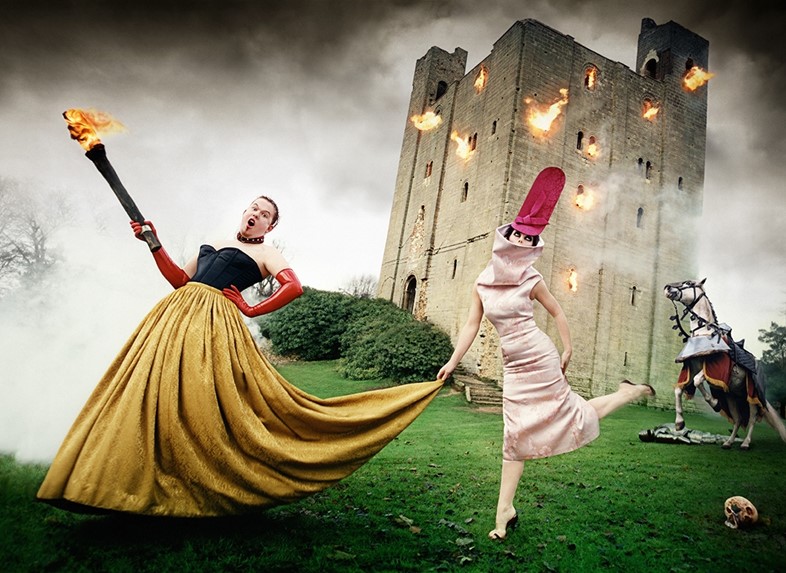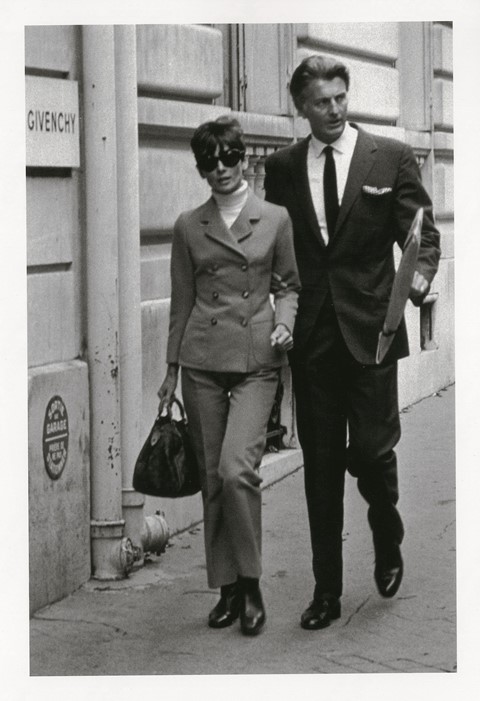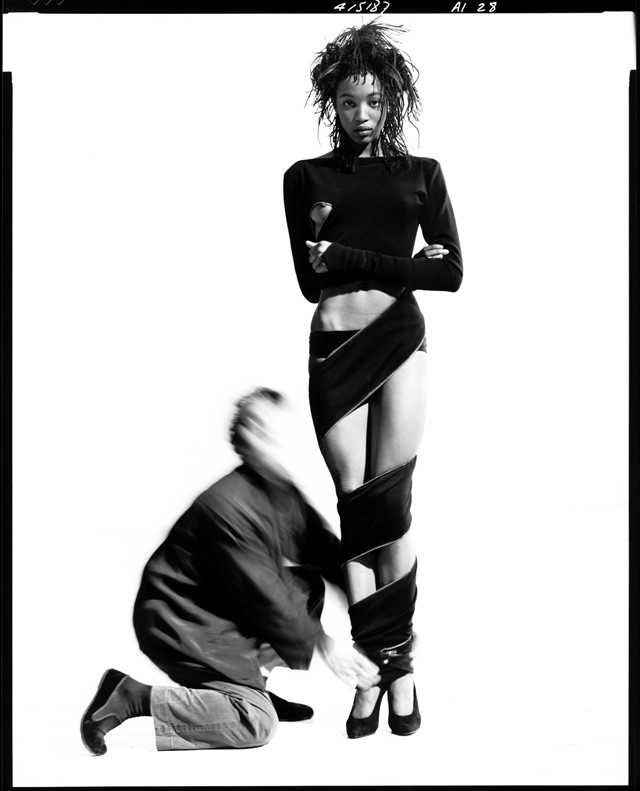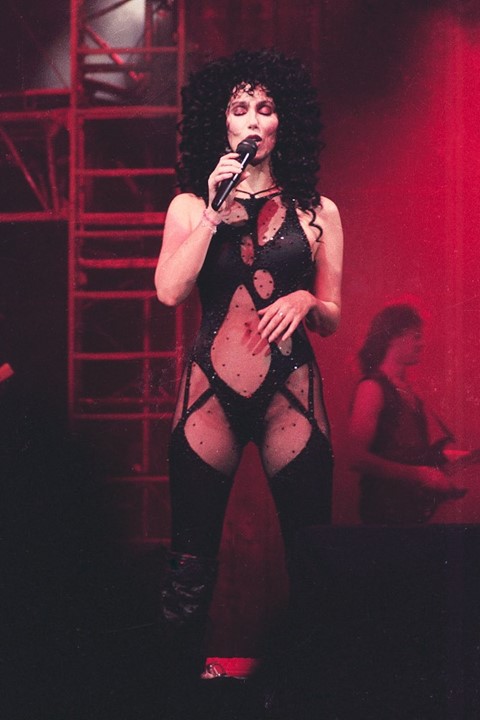On International Friendship Day, we look to five fashion designers whose closest allies became embodiments of their brands
Fashion designers have been dressing their nearest and dearest – their most passionate advocates – for centuries. Here, to mark International Friendship Day, we explore five extraordinary fashion friendships.
Halston and Bianca Jagger (above)
When Bianca Jagger rode around the dancefloor of Studio 54 atop a white horse in 1977, she did so wearing a design by Halston. The fabled night was in fact a 30th birthday party for Jagger that Halston had thrown: the duo were regulars at the legendary New York club in its late-70s heyday, alongside the likes of Liza Minnelli, Grace Jones, Cher, Elton John and Andy Warhol. Since finding success in New York with his namesake womenswear label following its launch in 1968, Halston had acquired a slew of high-profile fans, of which Jagger – who shot to the forefront of the city’s social scene when she married Rolling Stones frontman Mick in 1971 – was one.
Neither was from New York: Roy Halston Frowick grew up in Iowa, and Bianca Pérez-Mora Macías in Nicaragua. Their friendship was such that Jagger became the Halston woman and muse, embodying the designer’s signature aesthetic of pared-back elegance and sporting his refined pieces alongside him at Studio 54 and countless other events. André Leon Talley once commented that Halston “invented minimalism – that one-note look. To Halston less was more.” It was this particular brand of quiet chic that both Jagger and Halston epitomised in those years, and is still oft-referenced today.

Alexander McQueen and Isabella Blow
It was Alexander McQueen’s mother Joyce who would be first to encounter the indomitable force that was Isabella Blow. “There is this crazy woman who keeps ringing up about your clothes,” the designer would recount. When they did meet, Blow, then working at Tatler, agreed to purchase his Central Saint Martins graduate collection in £100 instalments. (Accompanying her to the cash point each time, McQueen would give her a fresh bin bag of clothing on receipt of payment.) The following years saw Blow undertake the role of patron – she championed McQueen’s work voraciously, to anyone who would listen – but also friend, moving McQueen into her her London home for a period and spending long weekends together at her husband’s ancestral home, Hilles House.
Their relationship – usually tempered by a shared ribald sense of humour – was tested when McQueen failed to bring Isabella Blow into his team when he begun his tenure at Givenchy in 1997. “It’s like vampires, you need somebody and then you don’t need the drug anymore,” Blow said, telling those around her it was she who had initially convinced the French house to hire him. “I’m not doing any of this nannying stuff. I’m willing to nurture and help. But there’s only so far you can go.” Though tempestuous, McQueen insisted their relationship endured: “What I had with Isabella was completely dissociated from fashion, beyond fashion,” he told W Magazine after her death in 2007. At her funeral, held in Gloucester Cathedral, she was buried in a red-and-gold brocade gown by McQueen; later, he would dedicate his S/S08 collection, La Dame Bleue, to her memory. As the artist John Maybury, a close friend of the pair, said: “It would be a mistake to think that at any point he ceased to love her.”

Hubert de Givenchy and Audrey Hepburn
Hubert de Givenchy was not so much a friend to Hollywood golden girl Audrey Hepburn as he was a lifelong companion. The duo met for the first time in 1953, when Hepburn arrived at his studio to ask if he might design the costumes for her upcoming film role (in Sabrina, released the following year, and whose impeccable style has since gone down in history). Famously, though, Givenchy was less than impressed with the fawn-like young thing he found at his door.
“I was expecting Katharine Hepburn,” the late couturier told Osman Ahmed for AnOther, in late 2016. “I was quite astonished when this young, small, sparkly girl showed up… I don’t think she had ever seen a piece of haute couture before. She came in a striped T-shirt and trousers and tried on a couple of the samples. I was busy preparing my next collection so I told her I wouldn’t be able to do it, but she was very persistent. She invited me for dinner, which was unusual for a woman to do back then, and it was at dinner that I realised she was an angel.” An enduring romance was born: Hepburn went on to wear Givenchy throughout her life – but perhaps more impactful even than the archive both of pieces and photographs of Hepburn wearing them, is that they became the greatest of friends; when, in 1993, Hepburn died, Givenchy was both a mediator of her will and a pallbearer at her funeral.

Azzedine Alaïa and Naomi Campbell
As the story goes, Naomi Campbell was new both to fashion and to Paris when, at the age of 16, she found herself alone in the city, all of her money having been stolen. Unsure of what to do or who to turn to, a friend asked her to accompany her to the house of Azzedine Alaïa, at 7 rue de Moussy. There, he cooked and served her dinner – an example of the generosity and humility which the designer went on to become well known for – and, as she left, gave her the gift of a dress. A life-long friendship began.
From that moment on, Campbell stayed with Alaïa whenever she was in Paris – she had her own room, and her mother, a French speaker, would call Alaïa directly, translating between the two of them. “Growing up in that house, I had the best wardrobe in the world,” she told British Vogue. “When I moved in, my bedroom was on the first floor so I would sneak out through the window to go to clubs, dressed in clothes from the boutique. I’d leave the shop door ajar so that I could get back in, but Azzedine knew the staff at Les Bains Douches and they would always call him so that he could come and collect me. He would find me there, in the middle of the dancefloor, fix my outfit so that it looked how it was supposed to, and then he would drag me back home, no matter how much I protested. He loved to tell those stories, and he always wanted to protect me; he was my Papa.”
The respect was mutual, to say the least, and while Alaïa went on to work closely with Campbell throughout his life, their relationship far outstripped that of a couturier and his muse. “Like me, she is intuitive, stubborn, quick, generous and honest. Naomi is an amazing person; nobody truly understands her,” he told Tim Blanks.

Bob Mackie and Cher
If Halston pioneered a ‘less is more’ approach to fashion design, Bob Mackie’s trademark is that ‘more is never enough’. Fantastical, extravagant and heavily embellished pieces by the American designer have been worn by the world’s equally fabulous actresses and singers for decades (‘pieces’ being the operative word: recurring traits in Mackie’s clothes are barely there fabrics and abundant cut-outs). One such woman has been turning to Mackie and his dazzling designs for over 50 years. Their relationship garnered attention when, in 1974, Mackie accompanied Cher to the Met Gala, with the singer wearing a now-iconic ‘naked dress’ of his design, the see-through sheath complete with glittering embellishments and feathered cuffs and hem. The pair met on the set of The Carol Burnett Show in 1967, for which Mackie created elaborate costumes during its 11 years, and began collaborating soon after – Mackie having been completely entranced and surprised by the Sonny & Cher singer who introduced herself to him.
“Bob changed my entire life!” exclaimed Cher to Billboard magazine. “Without Bob I would have been... a peacock without feathers.” Hundreds of sequinned, bejewelled, feathered and even mohawked outfits later, Cher’s image is thoroughly intertwined with Mackie’s aesthetic. Today, as she continues to tour and perform, Mackie still creates Cher’s costumes – the next collaboration being the outfits for The Cher Show, an upcoming musical about the singer’s life. Of his creative process with Cher, Mackie said in 1990: “When we design the costumes for her, it has nothing to do with fashion. It has nothing to do with anything but the fact that we are attempting to present to the world this... creature in her own right.”
![02 STUDIO54_[AdamSchull]](https://images-prod.anothermag.com/900/azure/another-prod/370/8/378560.jpeg)